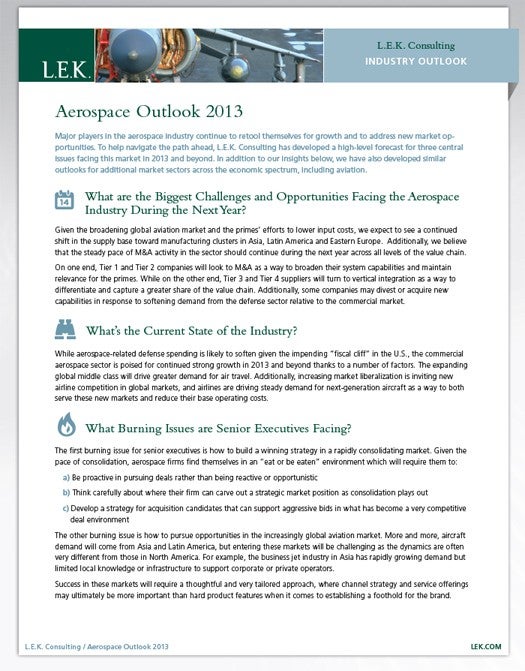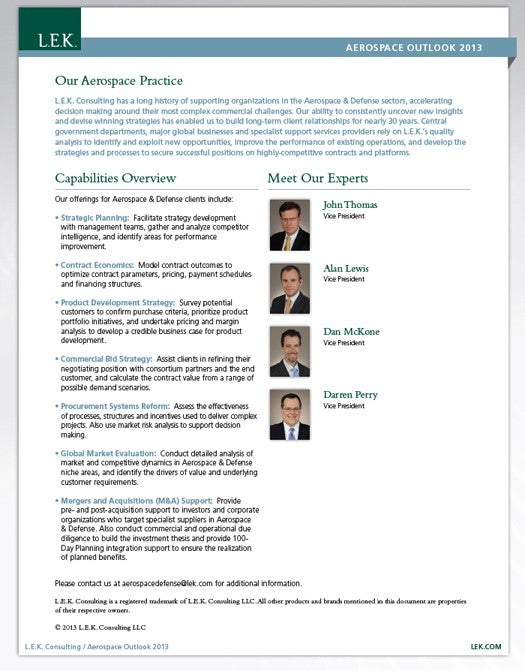
Summary
What are the Biggest Challenges and Opportunities Facing the Aerospace Industry During the Next Year?
Given the broadening global aviation market and the primes’ efforts to lower input costs, we expect to see a continued shift in the supply base toward manufacturing clusters in Asia, Latin America and Eastern Europe. Additionally, we believe that the steady pace of M&A activity in the sector should continue during the next year across all levels of the value chain.
On one end, Tier 1 and Tier 2 companies will look to M&A as a way to broaden their system capabilities and maintain relevance for the primes. While on the other end, Tier 3 and Tier 4 suppliers will turn to vertical integration as a way to differentiate and capture a greater share of the value chain. Additionally, some companies may divest or acquire new capabilities in response to softening demand from the defense sector relative to the commercial market.
What's the Current State of the Industry?
While aerospace-related defense spending is likely to soften given the impending "fiscal cliff" in the U.S., the commercial aerospace sector is poised for continued strong growth in 2013 and beyond thanks to a number of factors. The expanding global middle class will drive greater demand for air travel. Additionally, increasing market liberalization is inviting new airline competition in global markets, and airlines are driving steady demand for next-generation aircraft as a way to both serve these new markets and reduce their base operating costs.
What Burning Issues are Senior Executives Facing?
The first burning issue for senior executives is how to build a winning strategy in a rapidly consolidating market. Given the pace of consolidation, aerospace firms find themselves in an "eat or be eaten" environment which will require them to:
a. Be proactive in pursuing deals rather than being reactive or opportunistic
b. Think carefully about where their firm can carve out a strategic market position as consolidation plays out
c. Develop a strategy for acquisition candidates that can support aggressive bids in what has become a very competitive deal environment
The other burning issue is how to pursue opportunities in the increasingly global aviation market. More and more, aircraft demand will come from Asia and Latin America, but entering these markets will be challenging as the dynamics are often very different from those in North America. For example, the business jet industry in Asia has rapidly growing demand but limited local knowledge or infrastructure to support corporate or private operators.
Success in these markets will require a thoughtful and very tailored approach, where channel strategy and service offerings may ultimately be more important than hard product features when it comes to establishing a foothold for brands.
Sample Visuals
06192018150632


